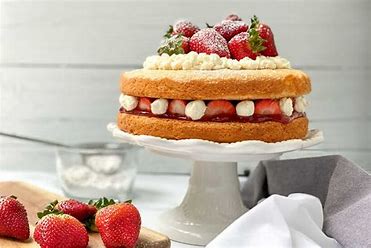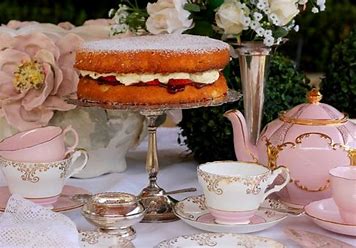The Allure of Victoria Cakes: A Delectable Journey Through History and Flavor

Victoria cakes, often referred to as Victoria sponge cakes, are a quintessential part of British baking tradition. Named after Queen Victoria, who was said to enjoy a slice with her afternoon tea, these cakes are beloved for their simplicity, elegance, and delightful taste. This blog post will take you on a journey through the history of Victoria cakes, explore their key ingredients and variations, and provide tips for baking the perfect Victoria cake at home.
The History of Victoria Cakes

Origins
The Victoria cake traces its origins back to the 19th century, during the reign of Queen Victoria. Afternoon tea became a popular social event in Britain, and with it, the need for light, sweet accompaniments. The Victoria sponge cake, with its delicate texture and simple yet satisfying flavor, became a favorite.
Queen Victoria’s Influence
Queen Victoria’s fondness for the sponge cake solidified its place in British culinary history. It is said that the Queen enjoyed her afternoon tea with a slice of sponge cake filled with jam and dusted with powdered sugar, a tradition that many still uphold today.
The Classic Victoria Cake Recipe
Key Ingredients
A classic Victoria cake consists of a few basic ingredients:
- Butter: Unsalted butter provides richness and a tender crumb.
- Sugar: Caster sugar is preferred for its fine texture, which helps create a light, airy batter.
- Eggs: Fresh eggs give structure and moisture to the cake.
- Flour: Self-raising flour is typically used, though plain flour with baking powder can also be substituted.
- Jam: Raspberry or strawberry jam is traditionally spread between the cake layers.
- Cream: Whipped cream or buttercream adds an extra layer of indulgence.
Step-by-Step Baking Guide
- Preheat the Oven: Set your oven to 350°F (180°C) and grease two 8-inch round cake pans. Line the bottoms with parchment paper for easy removal.
- Cream Butter and Sugar: In a large bowl, cream together the butter and sugar until pale and fluffy.
- Add Eggs: Beat in the eggs one at a time, ensuring each egg is fully incorporated before adding the next.
- Fold in Flour: Gently fold in the flour using a spatula, being careful not to overmix.
- Divide and Bake: Divide the batter evenly between the prepared pans and smooth the tops. Bake for 20-25 minutes, or until a toothpick inserted into the center comes out clean.
- Cool and Assemble: Allow the cakes to cool in the pans for 10 minutes, then transfer to a wire rack to cool completely. Spread jam on one cake layer, followed by a layer of whipped cream or buttercream. Place the second cake layer on top and dust with powdered sugar.
Variations on the Classic
While the traditional Victoria cake is beloved for its simplicity, there are several variations that can add a new twist to this classic dessert:
Lemon Victoria Cake
Add the zest of one lemon to the batter and use lemon curd in place of jam for a zesty, refreshing version.
Chocolate Victoria Cake
Substitute a portion of the flour with cocoa powder and use chocolate ganache or Nutella in place of jam and cream for a rich, decadent treat.
Berry Victoria Cake
Incorporate fresh berries into the filling along with the jam and cream for a burst of fruity flavor and a colorful presentation.
Tips for the Perfect Victoria Cake
1. Room Temperature Ingredients
Ensure all ingredients are at room temperature before starting. This helps achieve a smooth, well-incorporated batter and an even bake.
2. Gentle Folding
When adding the flour to the batter, fold gently to avoid knocking out the air, which helps keep the cake light and fluffy.
3. Even Layers
For evenly baked layers, weigh the batter before dividing it between the pans. This ensures both layers are the same thickness.
4. Fresh Ingredients
Use the freshest eggs and high-quality butter and jam. The quality of the ingredients significantly impacts the flavor and texture of the cake.
5. Proper Cooling
Allow the cakes to cool completely before assembling. This prevents the cream and jam from melting and keeps the layers intact.
The Cultural Impact of Victoria Cakes
Victoria cakes have transcended their origins to become a beloved staple in British culture and beyond. They are a popular choice for afternoon teas, celebrations, and family gatherings. The simplicity of the recipe makes it accessible for home bakers of all skill levels, while the endless variations offer opportunities for creativity and personalization.
Conclusion
Victoria cakes, with their rich history and delightful simplicity, continue to charm bakers and dessert lovers around the world. Whether you stick to the classic recipe or experiment with new flavors, the Victoria cake is sure to be a hit at any occasion. So next time you’re in the mood for a sweet treat, why not try your hand at baking this iconic cake? With the right ingredients and a bit of patience, you can enjoy a slice of history and a taste of timeless elegance.

